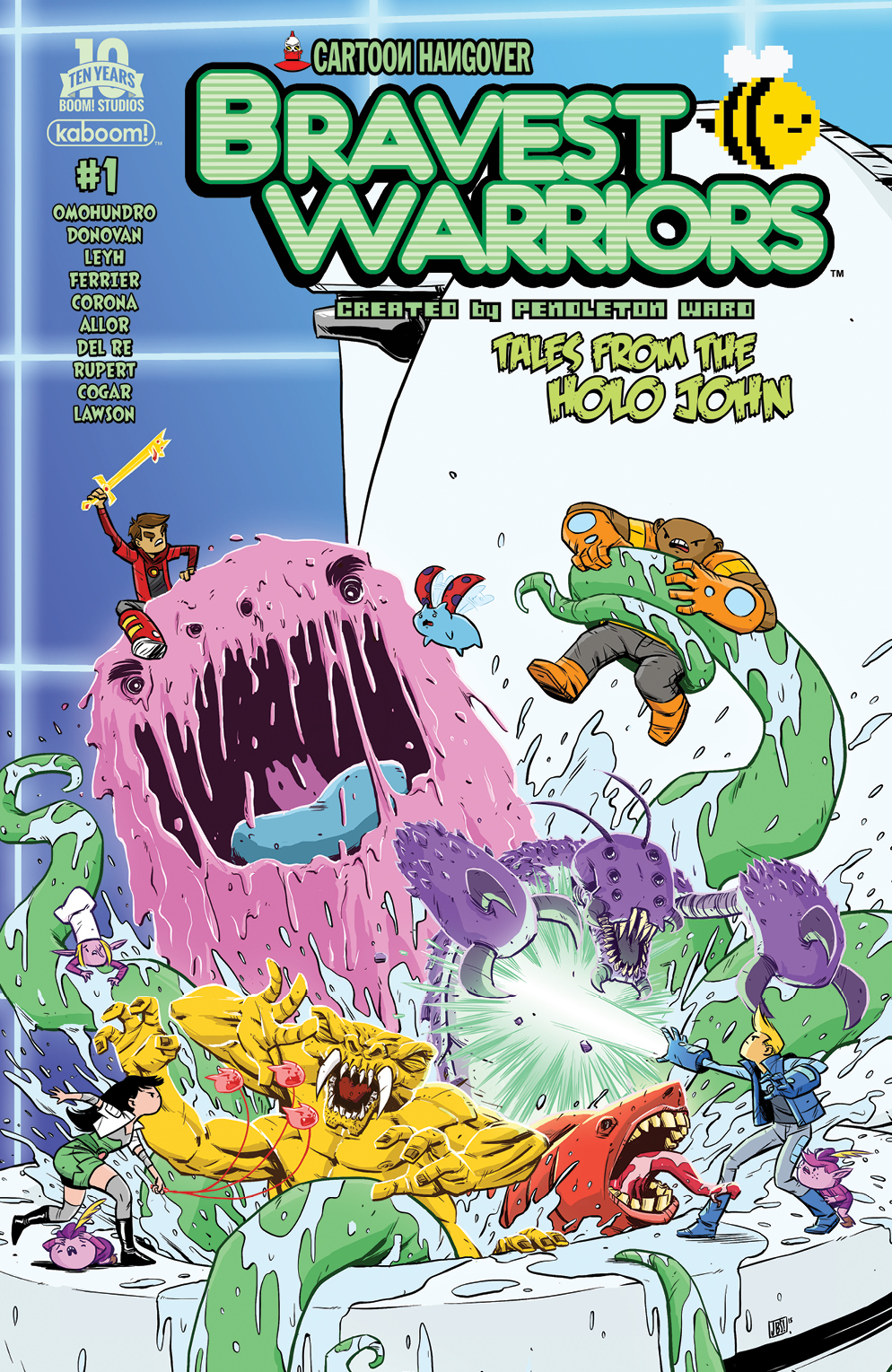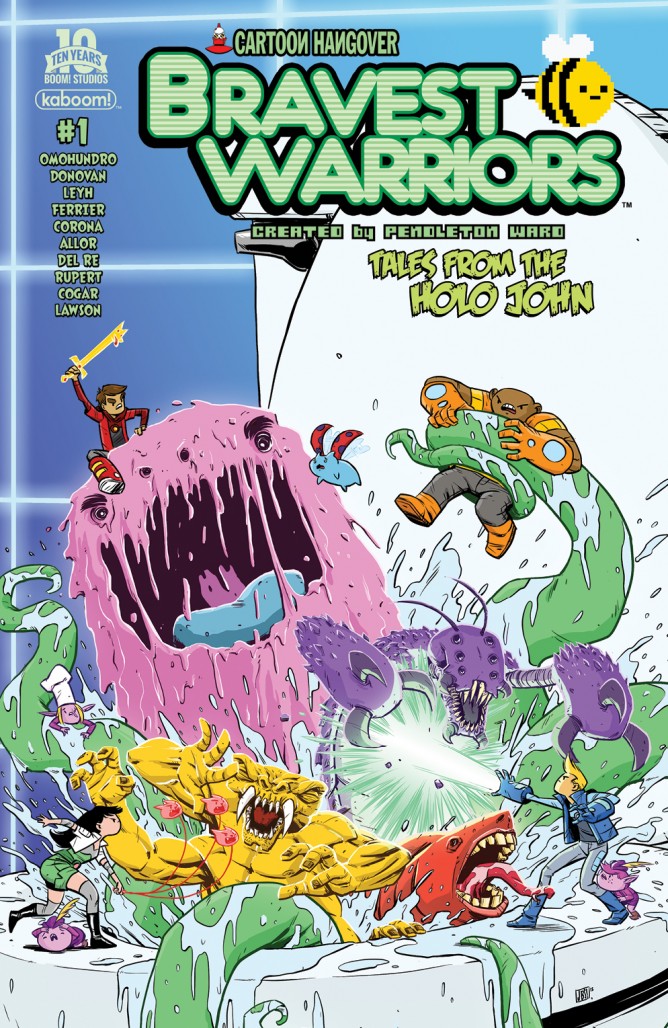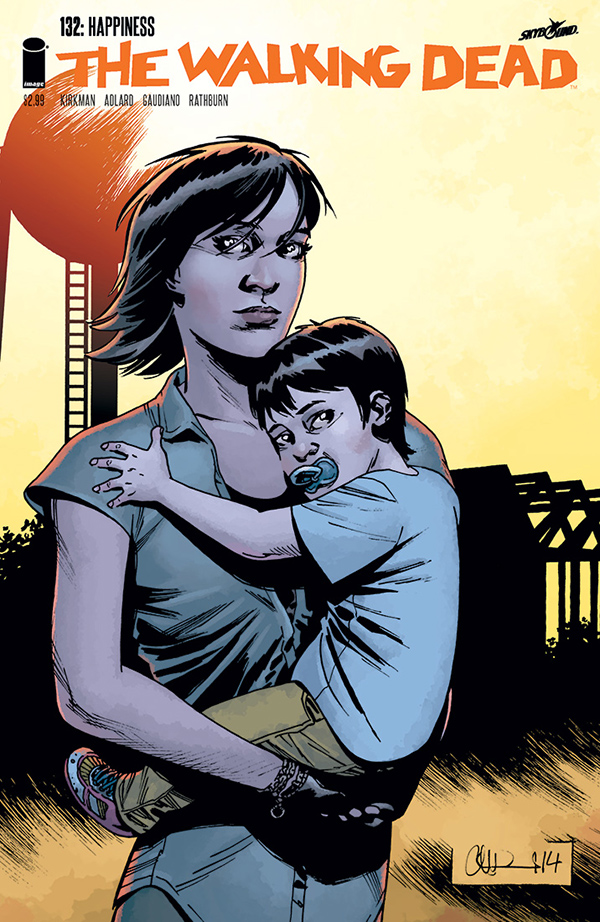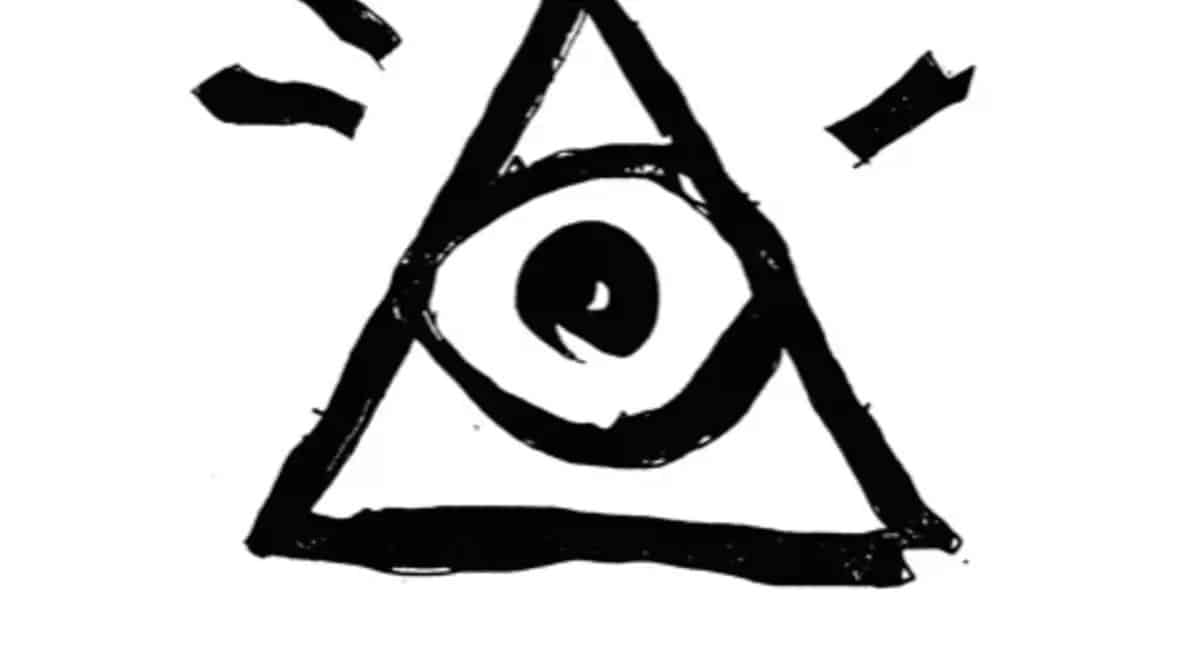Note: The distribution numbers used below are estimates, not hard sales numbers. They’re accurate to the trends, but take the exact unit measurements with a small grain of salt.
Recently, Comichron released Diamond distribution numbers for May 2015. To little astonishment at the feat but some awe at the scale, Marvel’s Secret Wars #1 took the number one slot for the month with 527,678 copies distributed to stores by Diamond, besting the distribution of DC’s April event book, Convergence #1, by nearly 400,000 copies. Interestingly, however, Boom’s Bravest Warriors: Tales from the Holo John #1 took the number two slot with 502,737 copies distributed, besting series based on established properties including Star Wars #5 (146,850), Deadpool’s Secret Secret Wars #1 (131,839), and Secret Wars #2 (210,807). In a world where even DC struggles to pull outstanding numbers on event books, which are traditionally considered to be defibrillators for comic sales, it’s surprising that a new title from one of the smaller major publishers pulled such a high distribution volume. How did Boom pull it off? Well, as Comichron writer John Jackson Miller notes in his analysis, “nearly 500,000 copies” were bought by Loot Crate, the largest nerd potpourri vendor on the internet.
According to the statistical analysis presented in the article, it is clear that the Loot Crate Effect has begun to not only change, but completely distort the direct market. Comic sales were up by $5,800,000 compared to May 2014, but $2,500,000 of that was thanks to the mass order Loot Crate placed on Holo John. That’s nearly half of the distribution growth. In a superficial analysis, you might think that this doesn’t really matter. After all, sales are sales, right? Regardless of who is buying or who ultimately ends up with the comic, greater sales mean healthier publishers.
However, while Loot Crate is definitely helping line publishers’ pockets, they aren’t nearly as helpful as you might expect.
Where we don’t see the distortion is in Diamond’s dollar shares, which only look at the dollars it was paid — and there, Boom is in fifth place. According to Diamond’s dollar rankings, it sold 2.4 copies of Bravest Warriors for every Secret Wars #2 it sold — and yet the distributor made more money on Secret Wars #2. Since Secret Wars #2 and Bravest Warriors cost the same — $4.99 — that would indicate that Loot Crate got a much better deal from Boom at wholesale on its copies than retailers got from Marvel.
What this means is that even though Boom’s market share is rising in terms of quantity, the company’s profit margins aren’t improving enough to match that growth. Not only that, but there’s no quantifiable proof that readership improves after companies dump large quantities of a single issue into Loot Crate’s hands. October 2014’s The Walking Dead #132 is one of the best performing single issues of the 21st century with 326,300 copies distributed, over 200,000 of which were purchased by Loot Crate. Meanwhile, September 2014’s sales of issue 131 are reported to be 69,810 and November 2014’s sales of issue 133 stand at 68,093. There was actually a net loss of readership following The Walking Dead‘s appearance in the Loot Crate.
It’s harder to determine the effect that Loot Crate has on the readership of series that have their first issue included in the service. Rocket Raccoon #1 sold 311,000 copies, over 200,000 of which were bought by Loot Crate. Issue 2 sold 56,597 copies, which presents a steep drop in readership even if you ignore Loot Crate’s wholesale order on issue 1. That’s not an atypical performance trend in comics, but it does serve as addition indication that Loot Crate isn’t really helping sales in the long term.
Like event books, it seems like Loot Crate has become another sales defibrillator– a way to improve sales in the short term that doesn’t necessarily help the industry grow in the long run. On the plus side, selling mass orders to Loot Crate has a much lower production cost than the creation of a new event series, where you have to hire writers, artists, and saddle marketing with a lot of additional work. With Loot Crate, you just pull the trigger and print more copies of the book you already paid to have made anyways. Unfortunately, this new method doesn’t seem to pad profits nearly as much as event books do.










Typical Diamond discount for a publisher is 60%. Typical Loot Crate discount is 80%-85%.
A very interesting analysis, and a reminder that we really have to keep looking at the actual numbers underlying the dollar amounts to gauge the real health of the industry. Thanks!
They may not be affecting single issue print sales, but they might be affecting digital sales and possibly trade sales. It’s more likely if you were to google the comic title name specifically to purchase, you are more likely to end up with links to Amazon or Comixology than you are a local comic shop.
This article, and it seems only this one, only gets served in mobile format (consistently using multiple browsers). It’s quite painful to read on a big desktop screen. Might want to look into that.
Comments are closed.